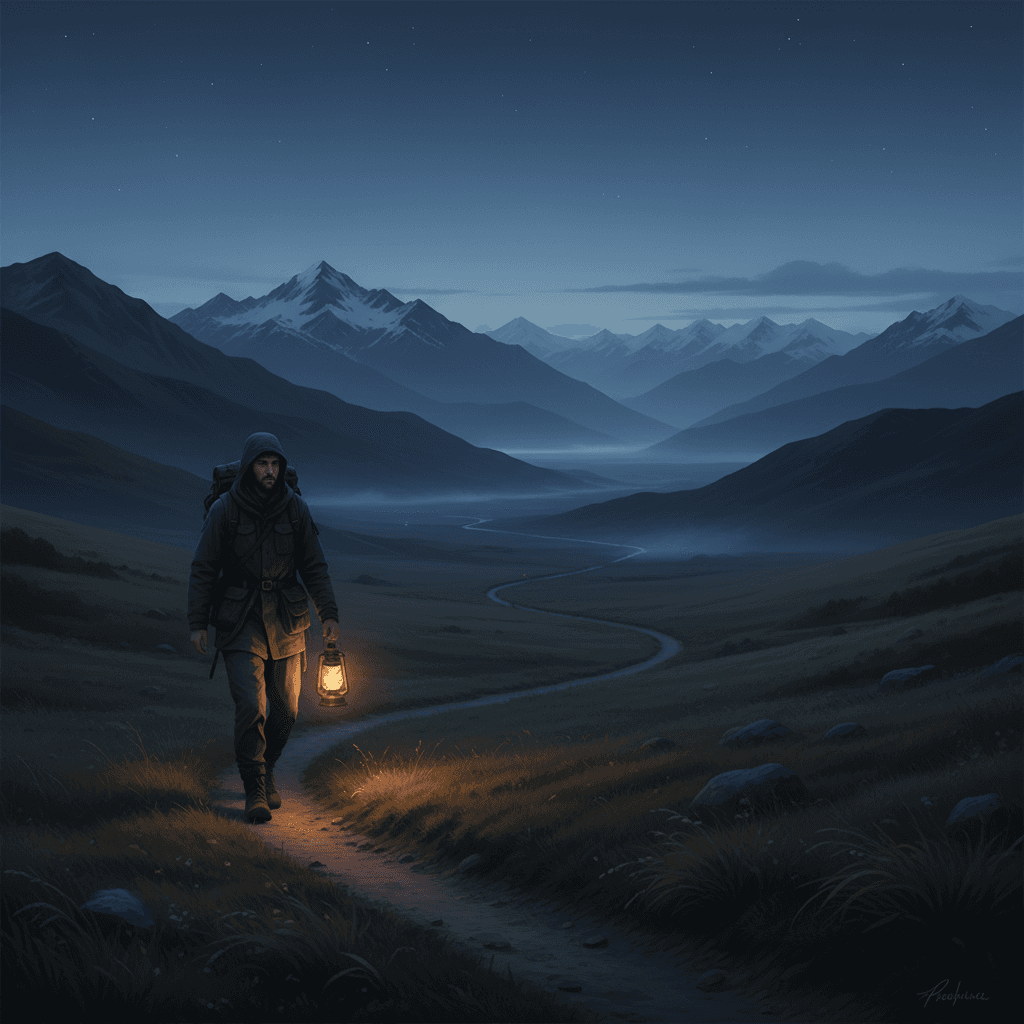Carry Courage: Lessons Only the Road Teaches

Carry courage like a small lamp and set out; every mile teaches what staying never will. — John Steinbeck
A Lamp, Not a Lighthouse
Steinbeck’s image of a “small lamp” rejects the fantasy of total illumination. Courage, he suggests, need not be dazzling; it only has to cast enough light to make the next step possible. Like a traveler who can see just a few feet of path, we proceed not by certainty but by sufficiency. This is courage as a portable tool rather than a grand signal—humble, steady, and usable anywhere. From this image, it follows that beginning is the essential act. We don’t wait for daylight or a perfect map; we move with what we have. That modest glow reframes risk: the darkness beyond the beam is not a threat but a field of discovery. And so the lamp’s purpose is not to banish uncertainty, but to make forward motion feasible.
Crossing the Threshold
To “set out” is to leave the known, a moment mythmakers call the threshold crossing. Joseph Campbell’s The Hero with a Thousand Faces (1949) shows how stories pivot on this choice: the doorframe divides habit from transformation. Crucially, the lamp is carried across, reminding us that we bring a piece of home—our values, our skills—into the unknown. Once over that threshold, the world answers back. New terrain asks new questions; constraints shift; assumptions meet weather, traffic, and chance. The first steps recalibrate our instruments, converting abstraction into traction. Thus departure is not escapism but an epistemic move: by relocating our bodies, we relocate our vantage points. And with a new vantage comes the possibility of new understanding.
What Motion Makes Visible
Every mile “teaches” because experience is a teacher that lectures in feedback. David Kolb’s Experiential Learning (1984) outlines a cycle—doing, reflecting, conceptualizing, and testing—best activated by varied, real-world conditions. Movement multiplies such conditions: new cues, consequences, and contexts force the mind to update its models of reality. Even neuroscience suggests novelty strengthens attention and plasticity; classic enrichment studies in rodents (Rosenzweig et al., 1962) found that diverse environments spur brain change. In motion, the curriculum writes itself: a headwind explains friction, a wrong turn clarifies maps, a roadside conversation reframes a belief. The lesson is not merely about geography; it is about fit—how our ideas fit the world and how the world resists or revises them. Thus miles become mentors, fluent in the language of constraint and possibility.
Steinbeck’s Roads as Classroom
Literature bears this out, and Steinbeck’s own pages illustrate it. In Travels with Charley (1962), he roams the United States with his poodle to encounter lives beyond his study, witnessing—from Maine to Texas to New Orleans—textures of speech, work, prejudice, and kindness that no stationary observation could supply. Those miles produce not just anecdotes but judgments tempered by contact, such as his unsettling look at desegregation “cheerleaders” in New Orleans. Earlier, The Grapes of Wrath (1939) turns Route 66 into a syllabus on dignity and deprivation. The Joads learn the economics of exile and the power of shared food and tools in roadside camps. In both books, motion converts sympathy into stewardship; the road is not spectacle but school. If journeys teach, then the converse implies a cost to staying.
The Quiet Costs of Staying
Staying can preserve safety, but it also preserves blind spots. When environments stay constant, our beliefs can harden into untested axioms, reinforced by convenience and routine. Psychologist Raymond Nickerson’s review of confirmation bias (1998) shows how readily we select evidence that supports prior views; static contexts only amplify that tendency. Thus the absence of miles is often the absence of friction—the kind that rubs off our certainties. We then risk mistaking familiarity for truth, comfort for wisdom. Paradoxically, the floor feels stable because we’ve never tried stepping onto the uneven ground that would reveal our balance.
Practicing Small Courage Daily
Because the lamp is small, the practice can be small too. We can make micro-expeditions: a new route to work, a cold call to someone we admire, a weekend volunteering outside our field, a beginner’s class that lets us fail safely. In complexity work, “safe-to-fail” probes (Snowden & Boone, HBR, 2007) generate learning without courting catastrophe; life offers similar experiments if we keep them limited, observable, and reversible. Each probe extends the circle of light. We iterate: step, notice, adjust. The point is not heroics but continuity—courage as a habit rather than a headline. And with repetition, the unknown shrinks to the size of the next step.
Bringing the Road Home
Finally, journeys ripen when their lessons return to community. Homer’s Odyssey ends not on the sea but in Ithaca, where the traveler’s wisdom reforms home. Likewise, T. S. Eliot’s Four Quartets (1941) suggests that the end of exploring is to “arrive where we started and know the place for the first time.” Travel clarifies the familiar by contrast. So the lamp that left with us comes back brighter, its light shared across kitchens, workshops, and councils. In that exchange, miles become meaning. We discover that setting out was never merely departure; it was preparation to see, to serve, and to stay—now with eyes educated by the road.